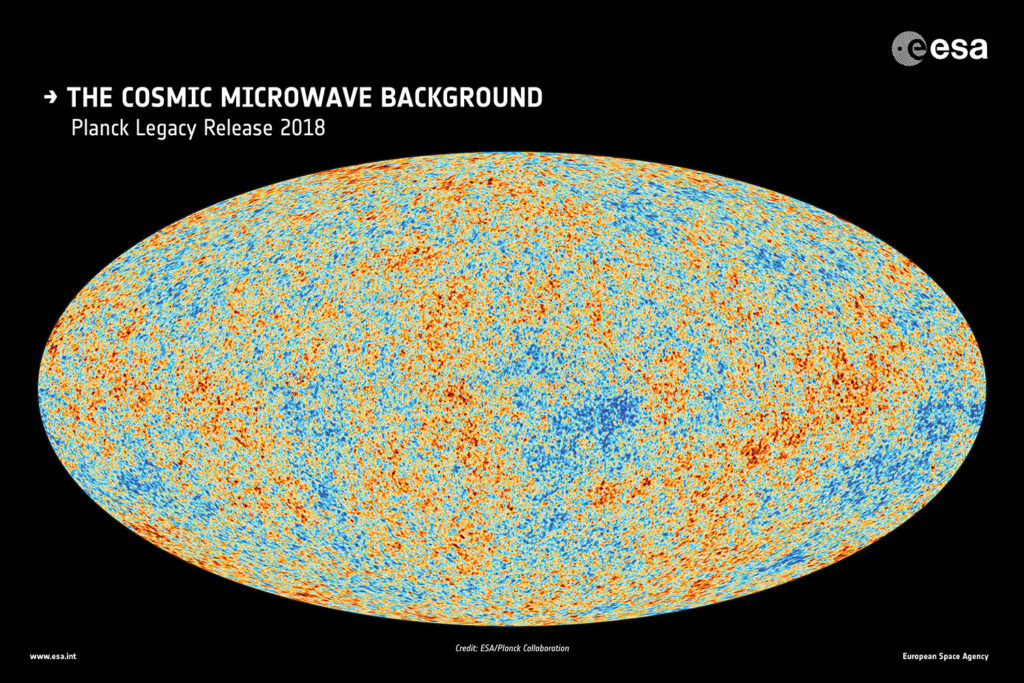The idea of an expanding Universe is one of the most remarkable discoveries in the field of cosmology. It might seem counterintuitive at first, as we usually perceive the world around us as relatively static but it revolutionized our understanding of the cosmos and challenged our perception of the Universe as an unchanging entity. Let’s delve into the fascinating evidence that supports this groundbreaking idea.
The realization that the Universe is expanding emerged from the revolutionary discoveries of Edwin Hubble in the 1920s. Hubble’s discovery was based on the measurement of a phenomenon known as redshift. When light from a distant object moves away from us, its wavelength stretches and shifts towards the red end of the electromagnetic spectrum. This is similar to how the pitch of an ambulance siren changes as it moves away from you. The extent of this redshift is directly related to the object’s distance and its rate of recession.
Credit: NASA/JPL-Caltech//R. Hurt (Caltech-IPAC)
By measuring the redshift of galaxies, astronomers can determine the speed at which they are moving away from us. Hubble’s observations, using the powerful telescope at the Mount Wilson Observatory, revealed a linear relationship between a galaxy’s distance and its recession velocity.
So, by studying the light emitted by distant galaxies, Hubble observed that these galaxies appeared to be moving away from us. Moreover, he noticed that the farther a galaxy was from us, the faster it seemed to be receding. This observation led to the formulation of what is now known as Hubble’s law.
To comprehend the implications of Hubble’s Law, scientists turned to Albert Einstein’s theory of general relativity. According to this theory, the fabric of space itself can expand or contract under the influence of matter and energy, and the motion of objects within it is influenced by this expansion.
Imagine a balloon with dots drawn on its surface. As the balloon is inflated, all the dots move away from each other, illustrating the expansion of space. Similarly, in the Universe, galaxies are like the dots on the balloon’s surface, moving away from each other as space expands.
So, Hubble’s Law implies that space itself is expanding, causing the galaxies to move apart from each other. This discovery was a fundamental piece of evidence indicating the expansion of the Universe.
Additionally, the abundance of light elements in the Universe, such as hydrogen and helium, provides another line of evidence for cosmic expansion. The ratios of these elements can be explained by the processes occurring during the early stages of the expanding Universe.
Further evidence for the expanding Universe came from studying the cosmic microwave background (CMB) radiation. The CMB is the faint radiation that permeates the entire Universe, which is a remnant from the early stages of the Big Bang. Detailed measurements of the CMB by satellite-based observatories, such as the Wilkinson Microwave Anisotropy Probe (WMAP) and the Planck satellite, have provided strong evidence for the expansion of the Universe. These measurements have revealed tiny temperature fluctuations in the CMB across the sky. These temperature variations correspond to fluctuations in the density of matter in the early Universe. The pattern of these fluctuations indicates that the Universe was once much smaller and denser. The observed expansion of the Universe explains why these fluctuations are seen as they are and supports the Big Bang theory.

Credit: ESA/Planck Collaboration
Moreover, the distribution of galaxies throughout the Universe also supports the idea of expansion. Large-scale surveys, such as the Sloan Digital Sky Survey, have mapped the positions of countless galaxies in three-dimensional space. These surveys show a web-like structure where galaxies are clustered together in long filaments and separated by vast cosmic voids.
The observed distribution of galaxies is consistent with the predictions of an expanding Universe. The filaments represent regions where matter has collapsed under gravity, while the voids correspond to regions where matter has been stretched thin due to the expansion of space.
The evidence for the expansion of the Universe is diverse and compelling. Observations of the recessional velocities of galaxies, along with the patterns found in the cosmic microwave background radiation, the abundances of light elements and the distribution of galaxies all contribute to our understanding of an expanding Universe. The idea of an expanding Universe revolutionized our understanding of the cosmos and continues to drive scientific exploration and inquiry into the mysteries of the Universe.



